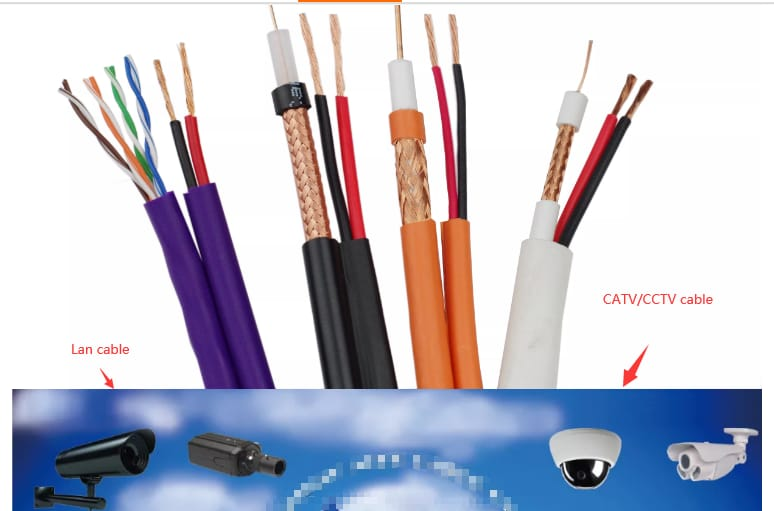TV Aerial Cables: What You Need for the Best Viewing Experience
In today’s digital age, where streaming services and smart TVs dominate the entertainment landscape, the humble TV Aerial Cables might seem like a relic of the past. However, for many, particularly those in areas with limited internet access or for fans of local broadcast channels, a reliable TV aerial setup is still crucial. If you’re part of this audience, understanding the nuances of TV aerial cables can make all the difference in your viewing experience.
Why does this seemingly simple component matter so much? Simply put, the right TV aerial cable ensures you receive the best possible signal, delivering crisp images and clear sound. In this guide, we’ll explore everything you need to know about TV aerial cables, from types to installation tips, helping you make informed decisions for the ultimate viewing experience.
Understanding the Basics of TV Aerial Cables
To start, it’s essential to grasp what TV aerial cables are and their role in your home entertainment setup. These cables connect your TV to the aerial, which captures broadcast signals from nearby transmission towers. The quality of this cable significantly affects the signal strength, impacting both picture and sound quality.
Not all cables are created equal. Different materials and designs can influence their effectiveness. For instance, thicker cables with better shielding often offer superior performance. While the differences might seem minor, they can have a noticeable impact on your daily TV watching.
The importance of choosing the right cable cannot be overstated. It’s an investment in your entertainment experience. A poor-quality cable might save a few dollars initially, but it could lead to frustrations like pixelated images or interrupted sound.
Types of TV Aerial Cables
When shopping for TV aerial cables, you’ll encounter several types, each with its own set of features and benefits. Coaxial cables are the most common, known for their durability and efficiency in transmitting signals. They come in various grades, with RG6 and RG59 being popular choices.
RG6 cables, for instance, are thicker and better shielded than RG59 cables, making them ideal for high-frequency signals. They are the go-to choice for many modern setups, ensuring minimal signal loss.
Another option is satellite cables, often used for satellite TV installations. These cables are designed to handle a broader range of frequencies, providing excellent performance in specific scenarios. Knowing the differences helps in making the right choice for your needs.
How to Choose the Right Cable for Your Needs
Selecting the correct cable depends on several factors, including the distance from the aerial to the TV and the environment in which your setup is located. Longer distances typically require cables with better shielding to prevent signal degradation.
Consider the installation environment as well. If the cable will be exposed to the elements, such as in an outdoor setup, you’ll need a weather-resistant option. Indoor installations have more flexibility but still benefit from cables with robust shielding.
Cost is another consideration. While premium cables might come at a higher price, they often deliver better performance in the long run. Weighing these factors will guide you in choosing the best cable for your setup.
Installation Tips for Optimal Performance
Once you’ve selected the perfect cable, proper installation is key to achieving the best results. Start by ensuring that all connections are secure. Loose connections can lead to significant signal loss.
When running the cable, avoid sharp bends or kinks, as these can damage the internal wiring. It’s also advisable to keep the cable away from electrical interference, such as power lines or other electronic devices, which can disrupt the signal.
If you’re uncertain about the installation process, consulting a professional can save time and ensure optimal performance. They can assess your specific setup and make recommendations tailored to your needs.
Common Challenges and Solutions
Despite your best efforts, you might encounter some common challenges when setting up your TV aerial cables. Signal loss is a frequent issue, often due to improper connections or inferior cable quality.
In such cases, checking all connections and ensuring they’re secure is a good starting point. Upgrading to a higher quality cable with better shielding can also resolve many signal-related issues.
If problems persist, consider using a signal amplifier. These devices boost weak signals, making them a viable solution for areas with poor reception. However, they should be used sparingly, as over-amplification can cause issues of its own.
The Role of Connectors and Adapters
Besides the cable itself, connectors and adapters play a vital role in your TV aerial setup. The most common type is the F-connector, known for its secure fit and reliable performance.
When selecting connectors, ensure they are compatible with your cable type. Mismatched connectors can lead to weak signals and poor image quality. High-quality connectors should also have a snug fit to minimize signal loss.
Adapters can be handy for converting different connector types. For instance, if your TV has a different input than your cable’s output, an adapter can bridge that gap, ensuring seamless connectivity.
Staying Ahead with Modern TV Aerial Technology
Technology is always evolving, and TV aerial setups are no exception. While basic principles remain the same, advancements have led to improved cable materials and designs, enhancing performance.
Modern cables often feature improved shielding and materials, designed to handle today’s high-definition signals with ease. Staying informed about these advancements ensures you’re equipped with the best tools for your setup.
Regularly reviewing your setup and upgrading components when necessary can keep your viewing experience top-notch. Small changes can lead to significant improvements in picture and sound quality.
Understanding Signal Amplifiers and Boosters
Signal amplifiers and boosters are useful tools for enhancing weak signals, especially in areas with poor reception. These devices can significantly improve your viewing experience, but they need to be used judiciously.
Amplifiers work by boosting the incoming signal before it reaches your TV. However, overuse can lead to issues like signal distortion. It’s important to choose a model that’s appropriate for your specific needs.
Consulting with a professional can be beneficial in determining whether a signal amplifier is right for you. They’ll provide guidance on the best model and installation practices.
Conclusion and Further Resources
In summary, the right TV aerial cable is crucial for the best viewing experience. By understanding the different types, choosing the appropriate one for your needs, and following best installation practices, you can enjoy crisp visuals and clear sound.






